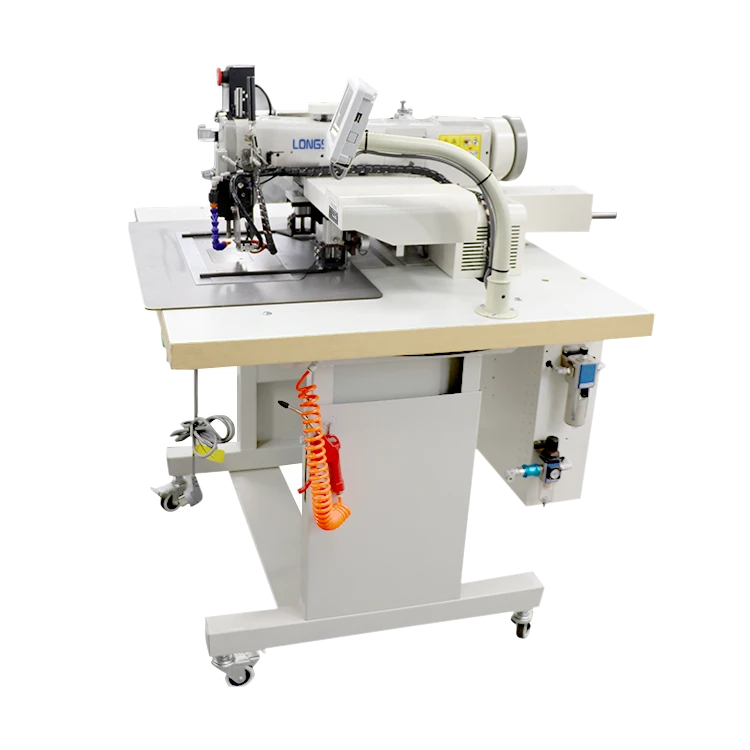Sewing with Faux Leather Tips and Techniques for Success
Sewing with Faux Leather A Guide to Choosing and Using the Right Sewing Machine
Faux leather, also known as synthetic leather or vegan leather, has gained immense popularity in recent years due to its versatility, aesthetic appeal, and ethical considerations. It serves as a fantastic alternative to genuine leather in a variety of applications, from fashion to home décor. However, sewing with faux leather can pose some challenges, particularly when it comes to selecting the right sewing machine and techniques. In this article, we will explore the essentials of sewing faux leather, helping you craft beautiful projects with ease.
Understanding Faux Leather
Faux leather is made from synthetic materials, typically polyurethane (PU) or polyvinyl chloride (PVC), designed to mimic the appearance and texture of real leather. It is available in various colors, textures, and finishes, making it a highly customizable material for different projects. While faux leather offers many advantages, such as being more affordable and easier to clean than genuine leather, it can also be tricky to sew because of its unique properties.
Choosing the Right Sewing Machine
When it comes to sewing faux leather, not every sewing machine is created equal. Here are key features to consider when selecting a sewing machine for your faux leather projects
1. Walking Foot One of the most important accessories for sewing faux leather is a walking foot. This attachment helps feed multiple layers of fabric evenly, reducing the risk of puckering or slipping that can occur with standard presser feet.
2. Needles Choose the right needle for sewing faux leather. A leather needle is designed to pierce through thick fabric without causing damage, making it an excellent choice for this material. Alternatively, a universal needle can work as well, provided it is sharp enough to handle the thickness.
3. Stitch Options While straight stitches are commonly used for faux leather, consider machines that offer a variety of stitch types, including zigzag stitches. These can add decorative elements to your projects and provide additional stretch when needed.
4. Motor Power A machine with a strong motor is beneficial for sewing through thicker layers of faux leather. Heavy-duty machines are typically better suited for this task and can handle materials that may otherwise cause lower-powered machines to struggle.
5. Feed Dogs Machines with adjustable feed dogs can provide better control while sewing, allowing you to maneuver the faux leather easily. This is particularly useful for detailed or intricate designs.
Preparing for Sewing
Before diving into your sewing project, it’s essential to prepare your materials thoroughly
. Here are some tips to help you get startedfaux leather sewing machine

1. Pre-Wash While faux leather is generally resistant to water, it’s still a good idea to wipe down your fabric with a damp cloth to remove any surface debris or dust before cutting.
2. Cutting Use a rotary cutter or sharp scissors to cut your faux leather. Make sure to work on a clean, flat surface and use a cutting mat to prevent damaging your workspace.
3. Patterns and Templates When working with patterns, consider using weights instead of pins to hold the fabric in place. Pins can leave holes in the faux leather, so weights are a safer option.
4. Test Stitches Always perform test stitches on scrap pieces of faux leather to ensure your settings (tension, stitch width, etc.) are appropriate before starting on your actual project.
Sewing Techniques
When sewing faux leather, proper techniques can make a world of difference. Here are some valuable tips
1. Use a Teflon Foot If you do not have a walking foot, a Teflon foot can also help glide over the fabric’s surface, preventing sticking or dragging.
2. Adjust Tension Faux leather can sometimes require adjustments to tension settings. Be prepared to fine-tune your machine for optimal results.
3. Slow and Steady Take your time while sewing, especially around curves and corners. This will help maintain a neat finish and prevent mistakes.
4. Finishing Edges For a polished look, consider using bias tape or a serger to finish raw edges, as faux leather can fray.
Final Thoughts
Sewing with faux leather opens up endless possibilities for creating stylish and durable projects. By choosing the right sewing machine and employing proper techniques, crafters can enjoy a rewarding and successful sewing experience. Whether you are making bags, clothing, or home furnishings, faux leather allows you to express your creativity while embracing a more sustainable approach to fashion. Happy sewing!
-
Industrial Cylinder Arm Sewing Machine: Revolutionizing Heavy-Duty SewingNewsJul.28,2025
-
Cylinder Arm Sewing Machine: Perfect for Special Sewing ApplicationsNewsJul.28,2025
-
Cylinder Bed Sewing Machine: Essential for Sewing Complex MaterialsNewsJul.28,2025
-
Heavy Duty Sewing Machine: The Essential Tool for Industrial ApplicationsNewsJul.28,2025
-
Computerized Pattern Sewing Machine: Revolutionizing Precision StitchingNewsJul.28,2025
-
Heavy Duty Industrial Sewing Machine: Power Meets PrecisionNewsJul.28,2025
-
Leather Sewing Machine: The Industrial Standard for Tough MaterialsNewsJul.18,2025





























